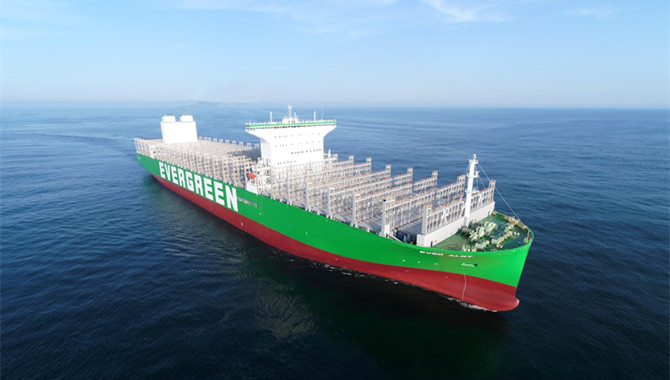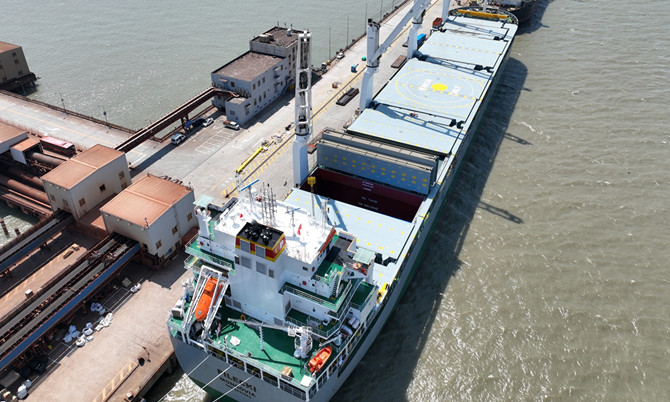
China held its lead in the global shipbuilding industry in the first half of 2022, with 45.2 percent share of the global market, according to multiple indicators on Thursday.
The nation's shipyards completed 18.5 million deadweight tons (DWT) of orders, which took 45.2 percent of the global market and ranked first in the world, according to statistics released by the Ministry of Industry and Information Technology (MIIT).
Orders on hand as of June 30 accounted for 47.8 percent of the market, the largest in the world. Those orders totaled 102.74 million DWT, up 18.6 percent year-on-year, with ships being built for export accounting for 88.7 percent of the total.
China was also first in new orders, with a share of 50.8 percent, though new orders went down 41.3 percent year-on-year to 22.46 million DWT, according to the MIIT.
The Shanghai Merchant Ship Design and Research Institute (SDARI), part of shipbuilding giant China State Shipbuilding Co, received more than 100 design orders for ships as of the end of June, taking 40 percent of domestic market orders and 22.5 percent of global market share, SDARI said on Wednesday.
China was the top shipbuilder in the world in 2021. After the first five months of the year,
China was shortly surpassed by South Korea in terms of global market share, showed statistics from Clarksons Research, a global shipping information provider.
According to Clarksons, China's shipbuilding totaled 22.8 million compensated gross tons accounting for 50 percent of the global total, in 2021.

The shipbuilding completion volume of China, Japan and South Korea - three major global shipbuilders - all saw yearly declines recently.
Delivery speed will become an important variable in the new shipbuilding market this year, said the China Association of The National Shipbuilding Industry (CANSI) in late June.
The CANSI also said that Chinese shipbuilders will have relatively wider profit margins than their South Korean and Japanese peers in the short term, given that the currencies of Japan and South Korea are more influenced by the US dollar than the yuan, amid interest hikes of the US Federal Reserve.
Source: Global Times
The opinions expressed herein are the author's and not necessarily those of The Xinde Marine News.
Please Contact Us at:
media@xindemarine.com



 World’s Largest Pulp Carrier Delivered 213 Days
World’s Largest Pulp Carrier Delivered 213 Days  Danelec Expands High-Frequency Data Installed-Base
Danelec Expands High-Frequency Data Installed-Base  World’s Largest LNG Dual-Fuel Container Ship Triu
World’s Largest LNG Dual-Fuel Container Ship Triu  PIL advances fleet renewal with the naming of its f
PIL advances fleet renewal with the naming of its f  Xing Tong Shipping Orders four 13,000 DWT stainless
Xing Tong Shipping Orders four 13,000 DWT stainless  Breaking New Ground in Maritime Excellence: DSIC &a
Breaking New Ground in Maritime Excellence: DSIC &a